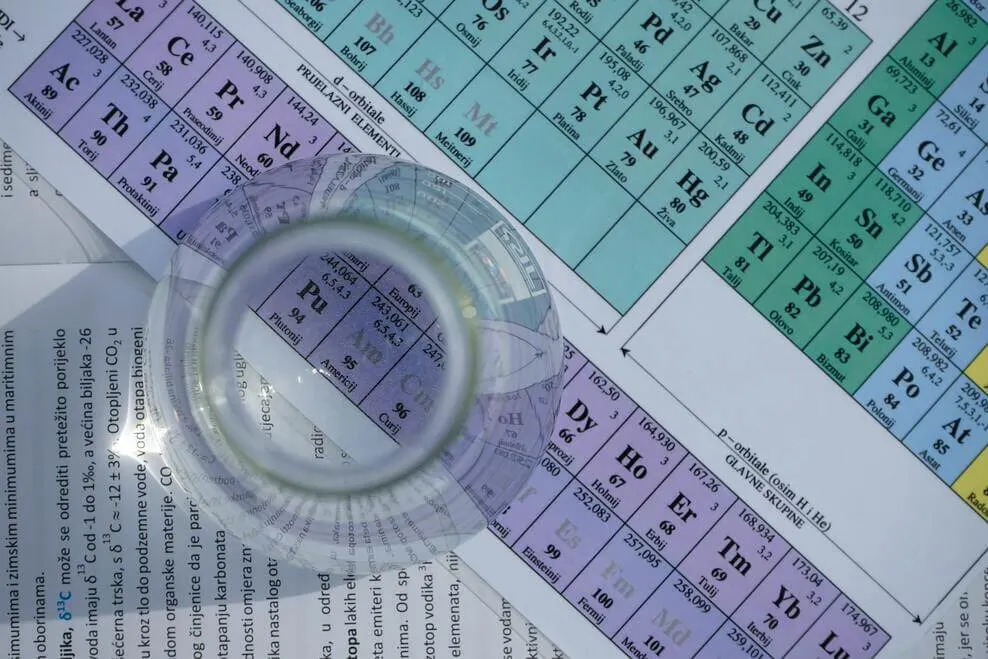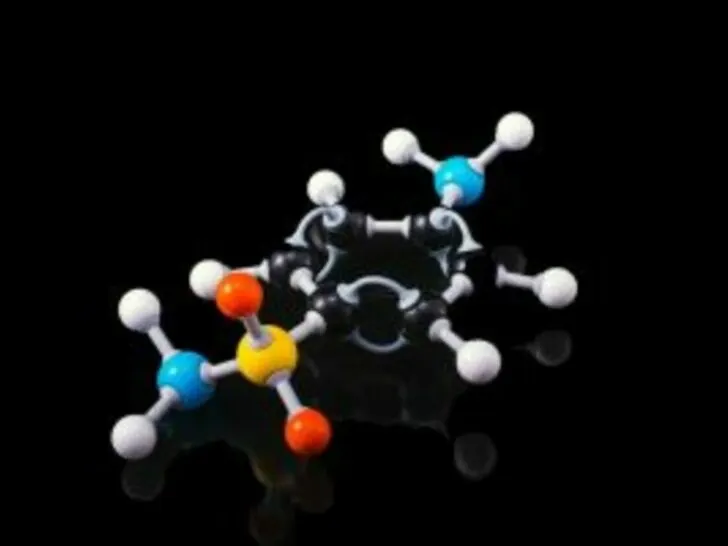Science is all about biology, physics, and chemistry. There are so many organic and inorganic compounds that exist either in free or combined states.
They are divided into acids, bases, alkalis, and salts. One compound reacts with another to form a new molecule.
Similarly, nitric acid (HNO3) and ammonia (NH3) are some of those compounds that have detrimental chemistry, which needs to be studied to know their chemistry and relationship with one another.
It’s interesting to know the relationship between such compounds and what they form by reacting with each other. Throughout this article, I’ll be talking about the chemistry of nitric acid and ammonia, their structural relationships, and varying electrophilic natures.
You’ll gain a huge amount of knowledge regarding these acids and bases and their nature by going through this blog. So why wait any longer?
Let’s have a look at their chemistry.
Nitric Acid (HNO3) And Ammonia NH3
Nitric acid’s hydrogen atom loses its electron and jumps onto the ammonia molecule, forming a tetrahedron-shaped positive ammonium ion while emitting a massive amount of neutralization heat.
The resulting nitrate negative ion now forms ammonium nitrate, a salt that can be used as an explosive. Ammonia, a base, reacts with nitric acid, an acid, to produce ammonium nitrate in an aqueous solution.
Because nitrate is an oxidizing agent and ammonia is a reducing agent, ammonium nitrate undergoes additional reactions.
NH3 + HNO3=NH4NO3
HNO3 is a strong acid and NH3 is a weak base.
Thus ammonia and nitric acid are entirely different from each other, one acts as an oxidizing agent by reducing the other while the other acts as a reducing agent by oxidizing the other.
Their nature generates many reactions, that we’ll look into further.

Ammonia Or Azane, What Do We Call It?
Ammonia, also known as azane, is a nitrogen and hydrogen compound with the formula NH3. Ammonia, the most basic pnictogen hydride, is a colorless gas with a distinctive pungent odor.
It’s a common nitrogenous waste, especially among aquatic organisms, and it significantly contributes to the nutritional needs of terrestrial organisms by acting as a precursor to food and fertilizers.
Ammonia is also used in many commercial cleaning products and is used as a building block in the synthesis of many pharmaceutical products. Nitric acid (HNO3) is a highly corrosive mineral acid that is also known as aqua forties and spirit of niter.
The pure compound is colorless, but older samples have a yellow cast from decomposition into nitrogen oxides and water. The majority of commercially available nitric acid contains 68 percent water.
Fumigating nitric acid is a solution containing more than 86% HNO3. Fumigating nitric acid is classified as white fuming nitric acid at concentrations above 95 percent or red fuming nitric acid at concentrations above 86 percent, depending on the amount of nitrogen dioxide present.
What Is The Sum Of H2SO4 And H2O?
Water splits sulphuric acid into cations and anions, yielding H(+) ion and SO4(2-) ion.
H(+) SO4 (2–) = H(+) SO4 + H2O
The H+ ions then combine with H2O or water molecules to form H3O(+) ions.
H3O(+) = H2O + H(+)
What I’ve just told you is a detailed description of what happens. We can also say that when water is added to H2SO4, it dissociates into hydronium ions or H3O(+) ions. So, we can conclude that when sulphuric acid is mixed with water, two ions are formed: SO4 (2–) and H30 (+).
Everything I’ve said so far has been explained in scientific terms.
In layman’s terms, H2SO4 is diluted as a result.
How Do We Get Rid Of HNO3?
Nitric acid is neutralized by adding an alkaline substance to it. NaOH, NH4OH, KOH, and other basic compounds are examples. There are several methods for testing pH:
- Making use of litmus paper (universal)
- If the test is successful, the paper will turn green (refer to the pH scale).
- A universal identifier
- The solution will turn green if the result is positive.
The amount of a base required to perform the neutralization is determined by the molarity (concentration) and volume of the solution.
Volume is calculated using titration, which is usually repeated for data reliability.
What is happening to the HNO3 is known as a neutralization reaction, which is also known as an acid-base reaction.
Is There A Reaction Where NH3+HNO3 Produces NO2+H2O?
The formula for NH4NO3 is :
NH3 (g) + HNO3 (g) (g). -44.0 kJ = G (20C) and H(20C) -78.3kJ.
Here’s a little thermodynamics for you! This is an acid-base reaction, also known as a neutralization reaction because the acid and base combine to form a salt, and water in general.
However, in this case, NH3 and HNO3 combine to form salt but no water. It’ll proceed as follows: NH4NO3 is formed by combining HNO3 and NH3. And it’s a well-balanced reaction.
To summarize, I would say that this is a nonproductive reaction that cannot occur because ammonia is a weak base and nitric acid is a strong acid, and if this reaction occurs, an acidic salt must be obtained with water, but NO2 is acidic but not salt.

Does NH4NO3 Decompose Into NH3 And HNO3?
NH4NO3 thermal decomposition produces N2 (nitrogen) plus H2O (water) and O2 (oxygen). Reactions between acids and bases are irreversible. However, the thermal decomposition of NH4NO3 produces N2O and water but no HNO3 or NH3.
It is a decomposition reaction in which NH4NO3 is broken down to NH3 and HNO3. This can also be regarded as the decomposition of the NH4NO3 as well as the combined reaction of HNO3 and NH3.
Thus, all these compounds when reacted with each other give different species with varying chemical orientations. We can look forward to these reactions by consulting different links available online.
| Strong Acid | HA + H2O → A-(aq) + H3O+(aq) |
| Strong base | BOH + H2O → B+(aq) + OH-(aq |
| Weak acid | AH + H2O ↔ A-(aq) + H3O+(aq) |
| Weak base | BOH + H2O ↔ B+(aq) + OH-(aq) |
What’s The Distinction Between H2SO4, HCL, And HNO3?
To distinguish between HCL, HNO3, and H2SO4, the anions must be distinguished.
The procedure for doing that is given here:
Put a drop of silver salt in each of the three solutions and see which one does not form a precipitate, which will be HNO3. Two salts produce insoluble salts when exposed to acids. This will also aid in distinguishing between the three solutions.
At room temperature, simple mixing of conc. HCl, conc.H2SO4 and KNO3 are unlikely to result in an effective chemical change. When a mixture of these three substances is heated, the solution is likely to turn yellow due to the liberation of chlorine as a result of the reactions described below.
KNO3 + H2SO4 = KHSO4 + HNO3
HNO3 + 3HCl (aqua regia) = NOCl + Cl2 + 2H2O
Hot sulfuric acid and nitrate salt react to form nitric acid. The nitric acid reacts with hydrochloric acid to produce yellow nitrosyl chloride (NOCl) and chlorine (as it happens in aqua Regia).
- NOCl can also be broken down into NO and Cl2.
- 2NO + Cl2 equals 2NO + Cl2.
The resulting NO easily combines with atmospheric oxygen to form reddish-brown nitrogen dioxide, NO2. Apart from the salt KHSO4, the possible products of mixing the three substances in hot conditions are HNO3, NOCl, Cl2, NO, and NO2.
What Exactly Is The Distinction Between NH3 (Ammonia) And H3N (hydronitric acid)?
In general, the order of the elements in the formula makes no difference; NH3 and H3N are both ammonia. Both H2O and OH2 are water. Both NaCl and ClNa are sodium chloride or table salt. Nitric acid, HNO3, is present. There is no hydronitric acid present.
NH3 is nearly identical to H3N. People might want to know What’s the difference between NH3 (ammonia) and HN3 (Hydronitric acid).
Hydrazoic acid (HN3), also known as “Hydronitric acid,” is formed by the reaction of sodium azide and a strong acid, such as:
NaN3 + HCl — HN3 + NaCl
It has a resonant molecular structure.
At room temperature and pressure, hydrazoic acid (also known as hydrogen azide or azoimide) is colorless, volatile (b.p. 37 °C), and explosive liquid.
Its explosive decomposition of it produces hydrogen and nitrogen gases:
H2 + 3N2 = 2HN3
In contrast, ammonia is a low-flammability gas with a trigonal pyramidal molecular structure.

Why Isn’t NH3 Abbreviated As H3N?
This is customary.
Empirical Formula, also known as the most simple formula, without any effort in ordering the elements to make the actual structure clear. Carbon is first, followed by hydrogen, and the remaining elements are listed alphabetically.
To be precise, IUPAC prefers that you use B first, then C, H, and finally all others in alphabetical order; this is not the order proposed by Hill.
For example:
- C8H5N2O (caffeine)
- F6S stands for Sulphur hexafluoride.
- Calomel ClHg
- Diborane: BH3
Molecular Formula
This will be determined by the chemical context.
C16H10N4O2 (caffeine)
In inorganic chemistry, particularly in binary compounds, the order is based on electronegativity, with the least electronegative element cited first.
SF6 stands for Sulphur hexafluoride.
All in all, both are correct, but it depends on the context.
Conclusion
- Ammonia (NH3) and nitric acid (HNO3) are chemical compounds. They have unique properties and applications.
- Ammonia is a widely used chemical utilized as a pesticide. It is also a fumigating agent and fertilizer. It is an element that makes the soil fertile and promotes plant growth.
- Nitric acid is vital in producing explosives. It has significantly influenced Germany’s World War II efforts.
- Ammonia is a weak base. It forms ammonium salts when it reacts with acids.
- Nitric acid is a strong acid, and its concentrated form is a powerful oxidant.
- Understanding the contrast and chemistry of these compounds is important in organic chemistry.
- Ammonia, also known as azane, is a colorless gas. It has a pungent odor and various industrial applications.
- Nitric acid, with the chemical formula HNO3, is a versatile compound. It is crucial in producing explosives.
Want to find out the difference between Marginal and Conditional distribution? Take a look at this article: Difference Between Conditional and Marginal Distribution (Explained)
Other Articles
PCA VS ICA (Know the Difference)
Mongols Vs. Huns- (All you need to know)
What is the Difference and Similarity Between Russian and Bulgarian Language? (Explained)

